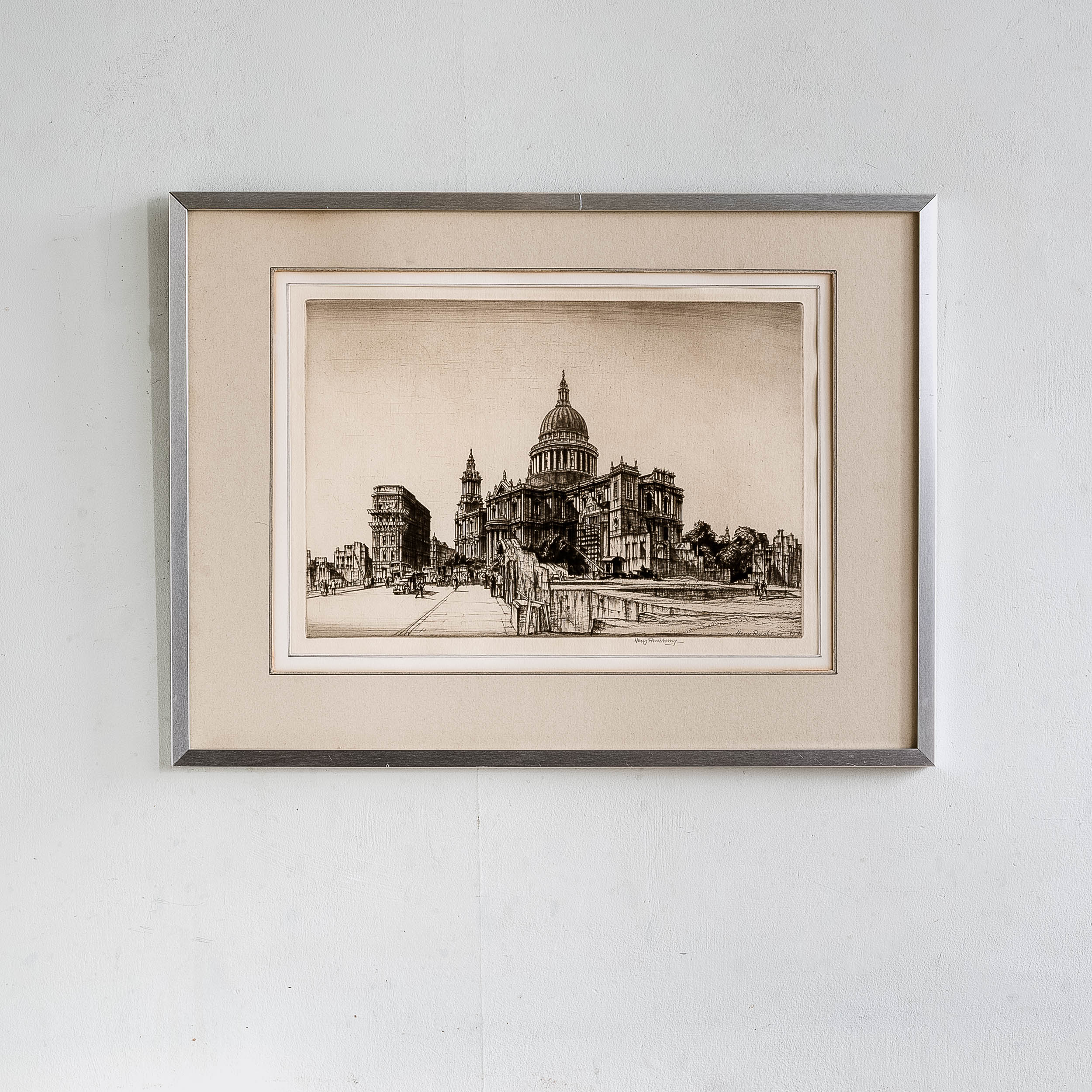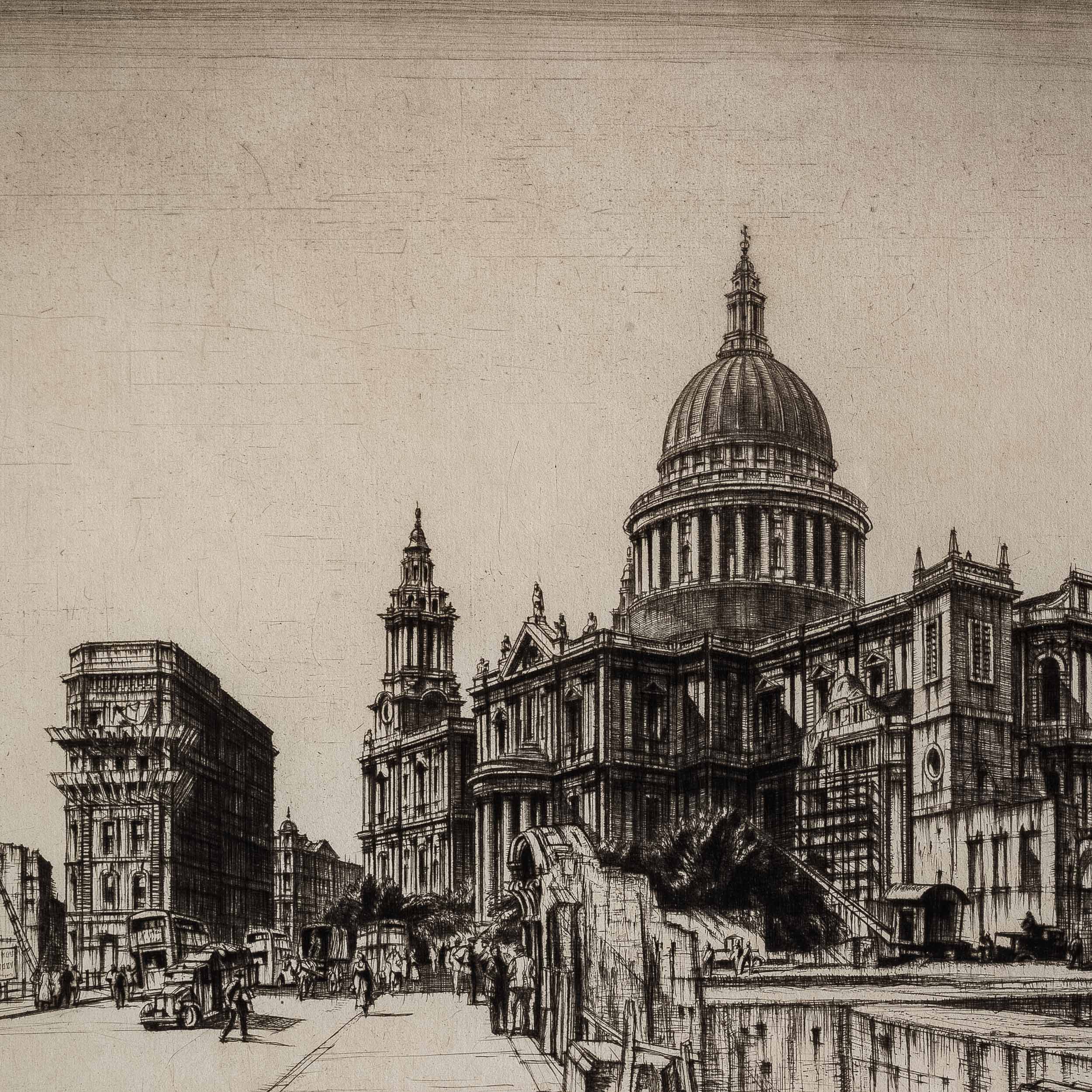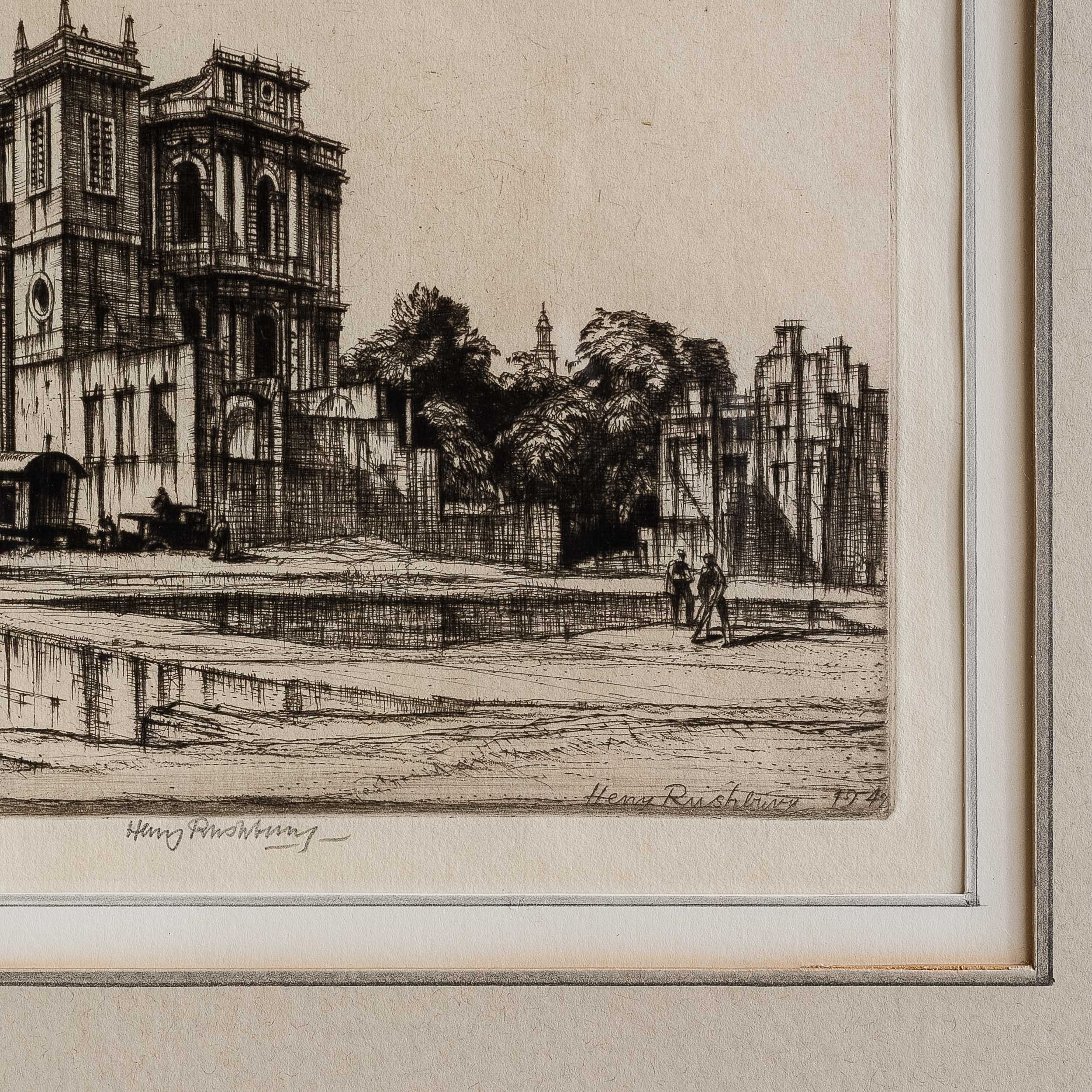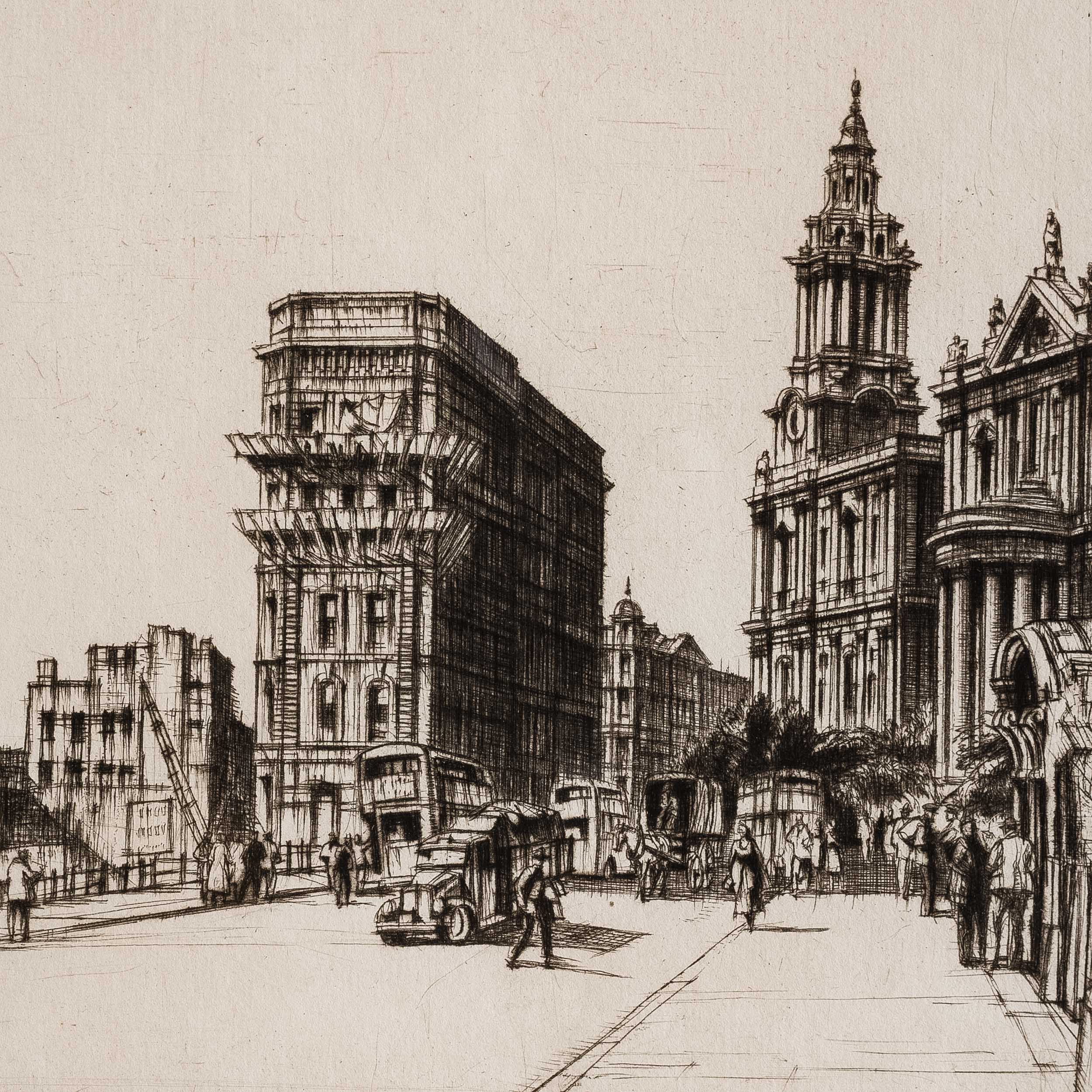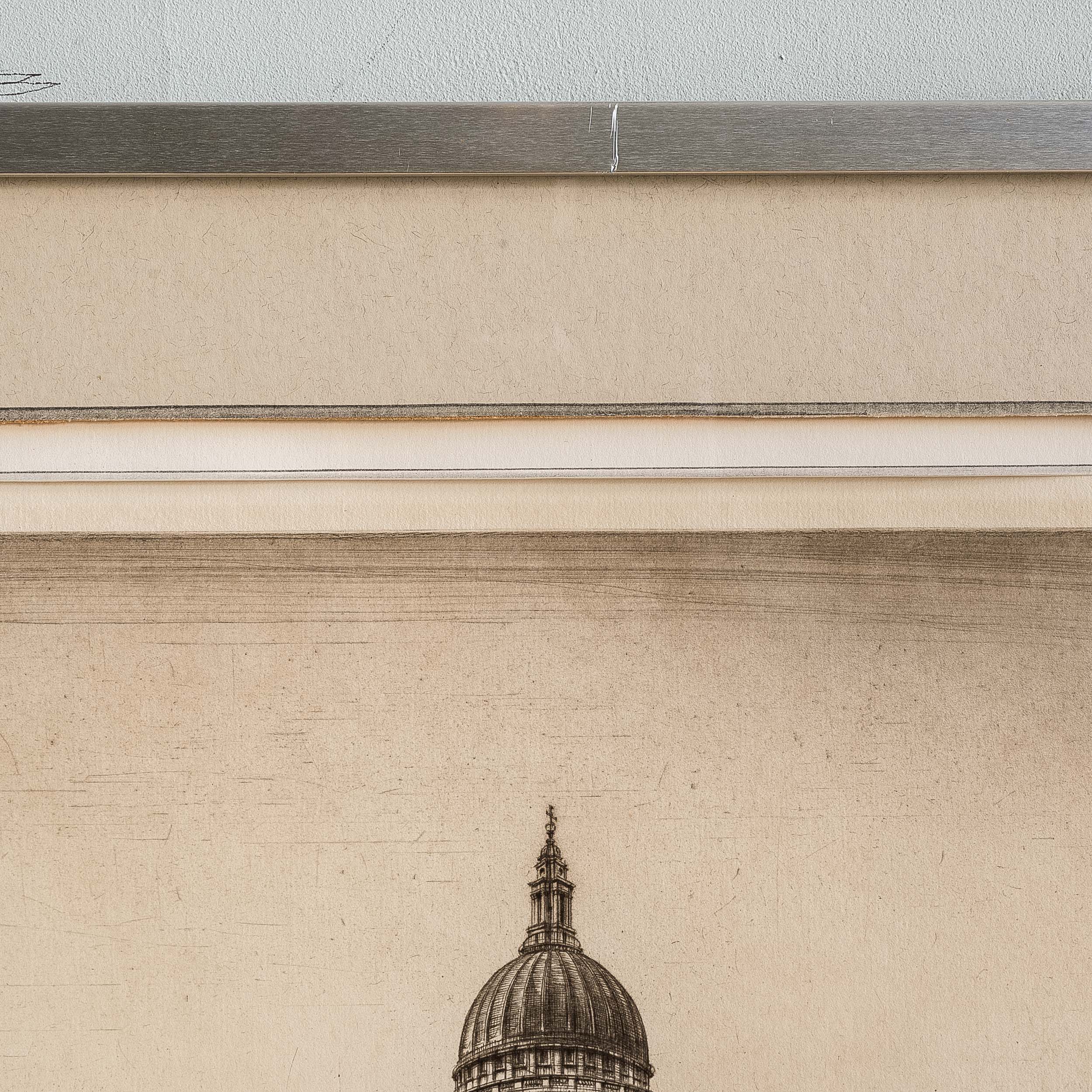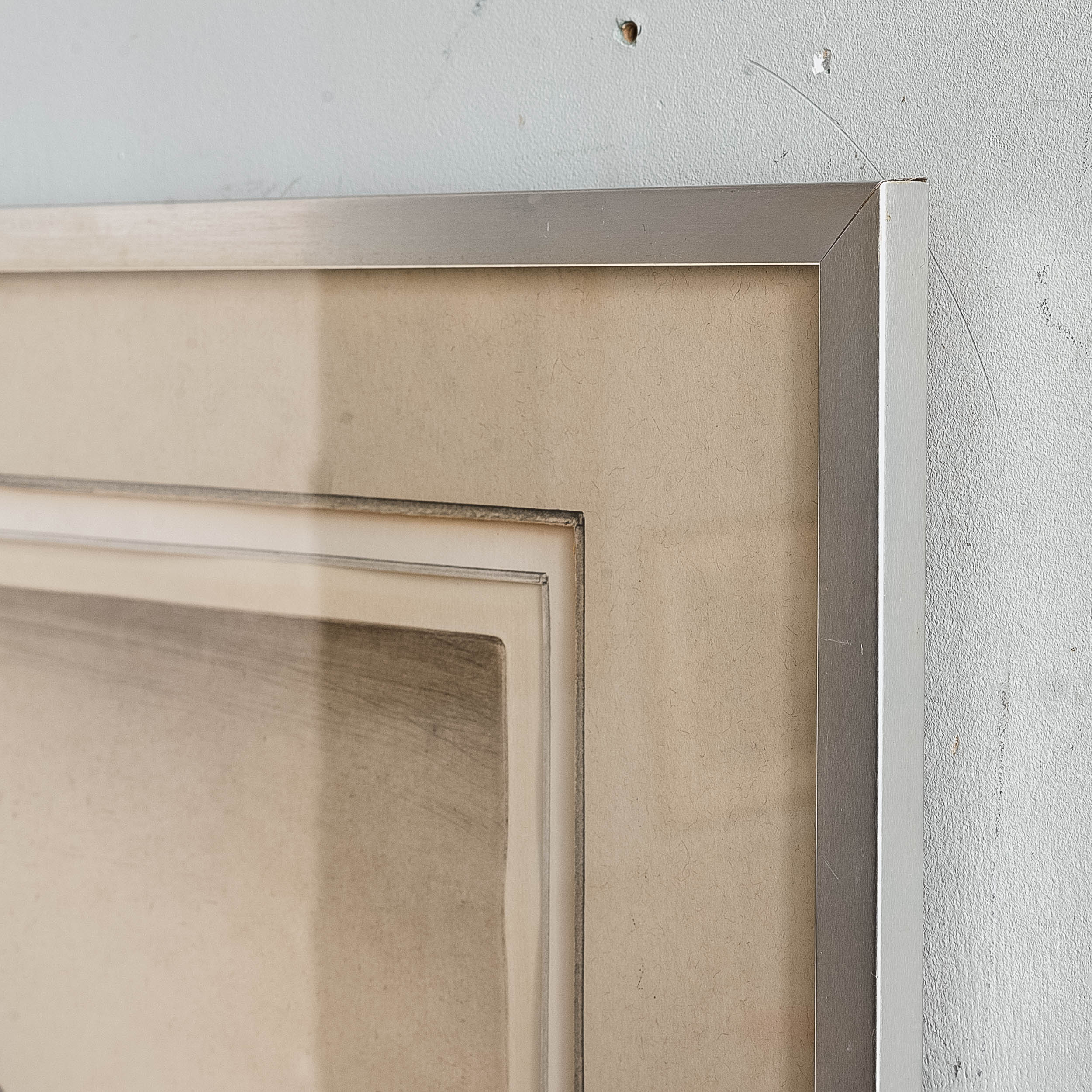St. Paul’s Cathedral from Cannon Street
A famed drypoint engraving of a bomb-damaged St Pauls viewed from Cannon Street dated 1942 by the War Artist Sir Henry Rushbury KCVO CBE RA (28 October 1889 – 5 July 1968). Signed and dated by the artist.
£625
In stock
Sir Henry Rushbury had been an official war artist during World War I, and took up etching and drypoint under the influence of Francis Dodd before studying under Henry Tonks at the Slade School of Art in 1921. Elected a member of the influential New English Art Club in 1917 he went on to join the Royal Society of Painter-Etchers in 1921 and the Royal Society of Painters in Water Colours in 1922 before being elected to the Royal Academy in 1936.
At the start of the Second World War he was again appointed as an official war artist and held that position until Victory in 1945. In 1949, he was elected Keeper of the Royal Academy and Head of the Royal Academy Schools, a post he held until 1964. He was knighted in the same year.
Here we see depicted a London slowly recovering from the worst period of the Blitz. Traffic has returned to the streets around a seemingly undamaged St Pauls Cathedral which rises undaunted into a cloudless sky. Plenty of evidence of the destructive fury of the Luftwaffe remains, however, with a foreground consisting of bare foundations and the ruined remnant of the Cordwainers Hall with only its rusticated door-case remaining facing out onto an almost obliterated Cannon Street.
It could be said that the truly striking aspect of the picture, to a native Londoners eye, would be the amount of clear sky visible from this vantage point and the creation of unexpected fields of vision in a city so famous for it’s built-up density and congestion. Fire-blackened bomb sites where an entire block of buildings has disappeared measure out the distance to Watling Street. There totters the lonely tower of St Augustine’s church, shorn of it’s fine lead spire, as all that remains of a church built by Sir Christopher Wren after the Great Fire of 1666 on 12th Century foundations.
Much of the destruction seen here was done on the night of 10-11 May 1941, on a night known as ‘The Worst Raid’, when 505 German bombers attacked London for 6 hours on a clear night under a full moon. This raid not only destroyed the Cordwainers Hall and Wren’s St Augustine church but brought ruin to every corner of London with Westminster Abbey, the Palace of Westminster, St Clement Danes, Millbank, Belgravia, Bermondsey and Stepney being especially badly hit. The night of 10-11 May 1941 marked the last major raid of the Blitz. It inflicted the highest number of casualties of any single night raid of the London Blitz: 1,436 Londoners were killed and over 2,000 others seriously injured. Henry Ross, the Rector of St Augustine’s church recorded the material damage in his diary thus, “Ghastly raid… Vestry gone; tower gone… everything burnt out”.

